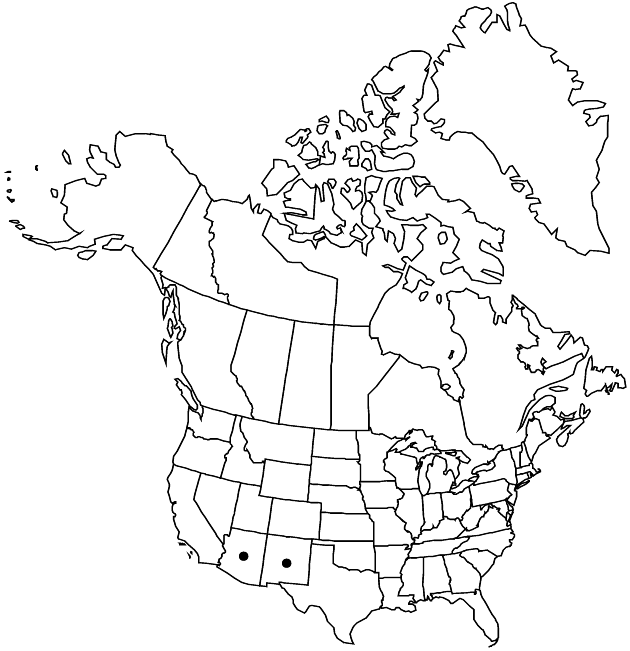Baccharis thesioides
in A. von Humboldt et al., Nov. Gen. Sp. 4(fol.): 48. 1818.
4(qto): 61. 1820.
Shrubs, 100–200 cm (openly branched from bases). Stems erect to ascending, slender, striate-angled, glabrous, scarcely resinous. Leaves usually present at flowering; sessile; blades (1-nerved) linear-oblanceolate to narrowly oblong, 20–40(–80) × 4–8 mm, bases cuneate, margins evenly serrate (teeth spinulose, apices acute, faces finely gland-dotted, not resinous). Heads (10–50+) in terminal, compact, rounded paniculiform arrays. Involucres campanulate; staminate 3–6 mm, pistillate 3–6 mm. Phyllaries lanceolate, 1–5 mm, margins scarious, erose-ciliate, medians green, apices acute or obtuse (erose, abaxial faces glabrous). Staminate florets 20–30; corollas 3 mm. Pistillate florets 30; corollas 2.2–3 mm. Cypselae 1.5–2.2 mm, 5-nerved, glabrous; pappi 4–6 mm.
Phenology: Flowering Aug–Nov.
Habitat: Mountains and canyons, oak-pine forests
Elevation: 2200–2500 m
Distribution

Ariz., N.Mex., Mexico.
Discussion
Baccharis thesioides is recognized by its erect stems, narrow, oblong, evenly serrate leaves with finely spinulose teeth, heads in relatively small rounded arrays, and 5-ribbed cypselae with short pappi. It is sometimes confused with B. bigelovii, which has broader and irregularly serrate leaves. The two taxa may belong to the same species complex centered in Mexico.
Selected References
None.